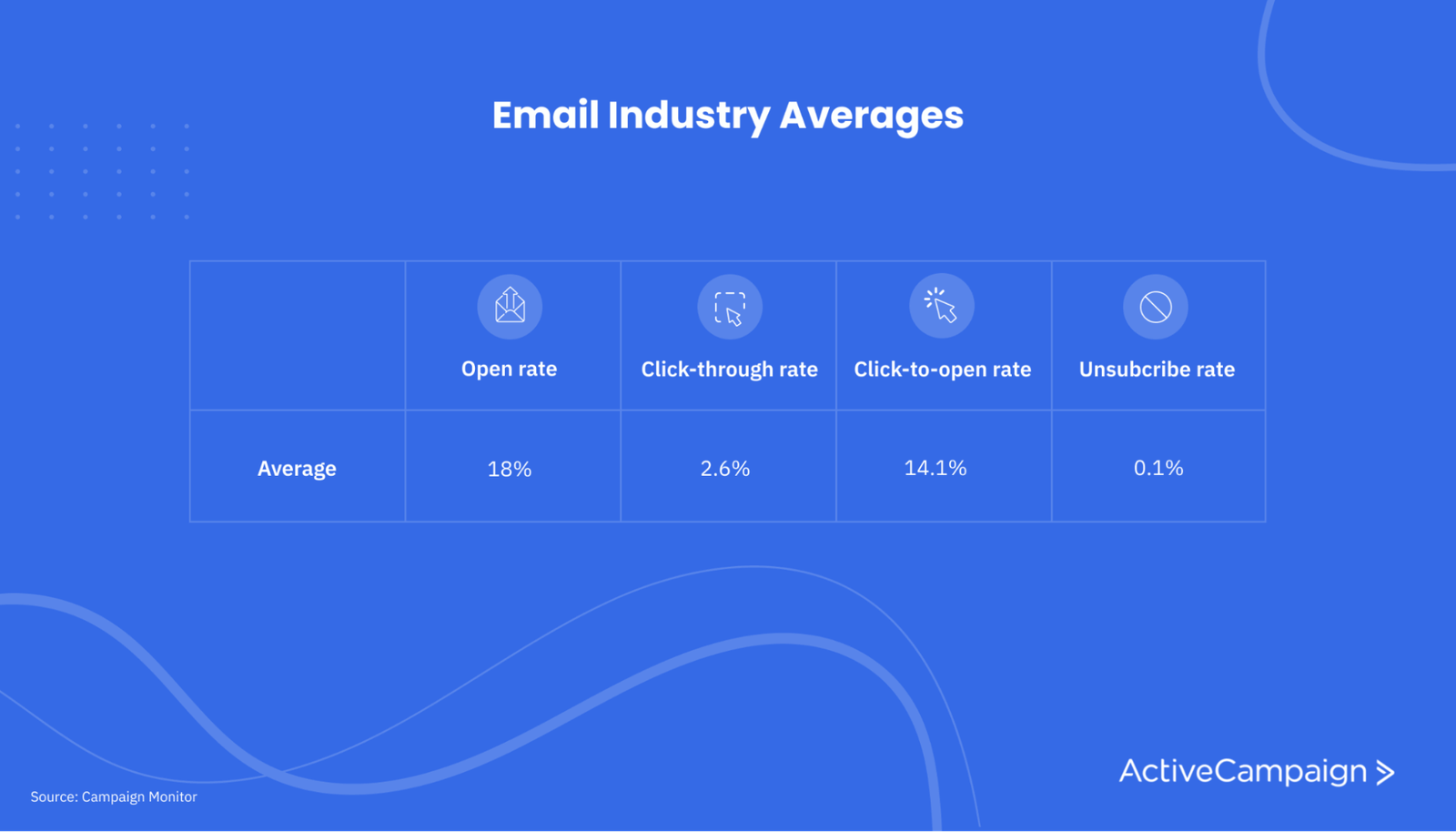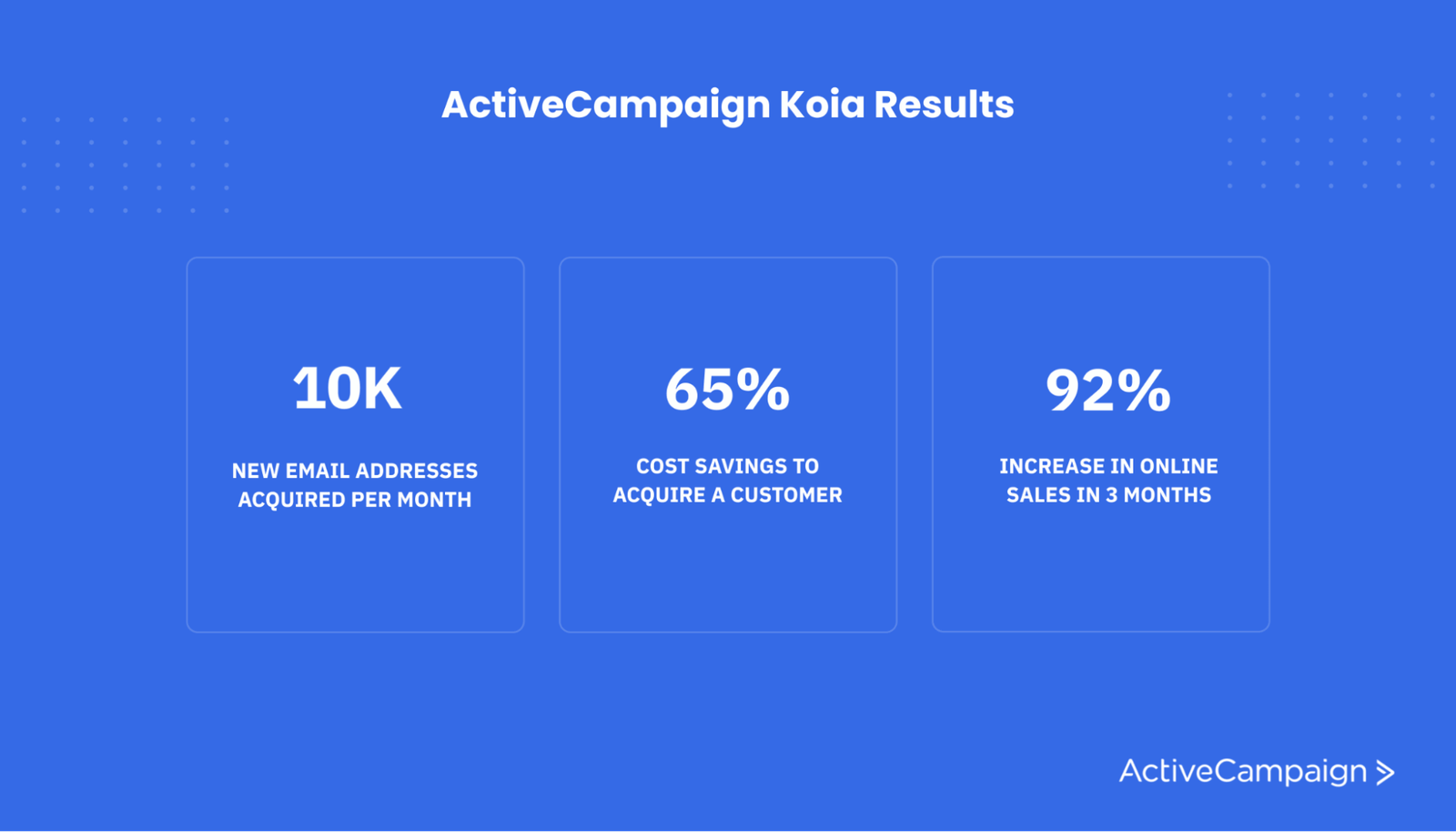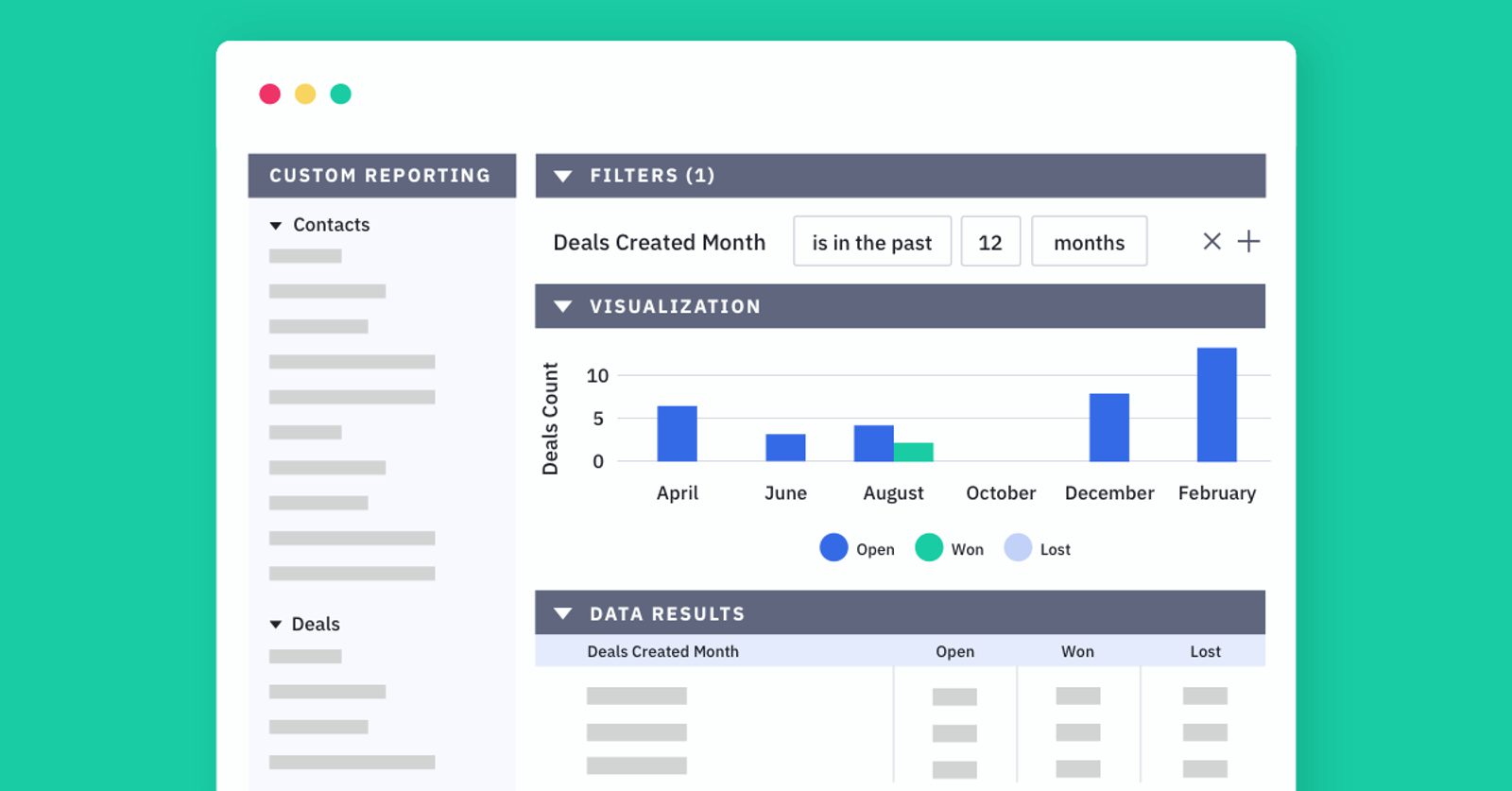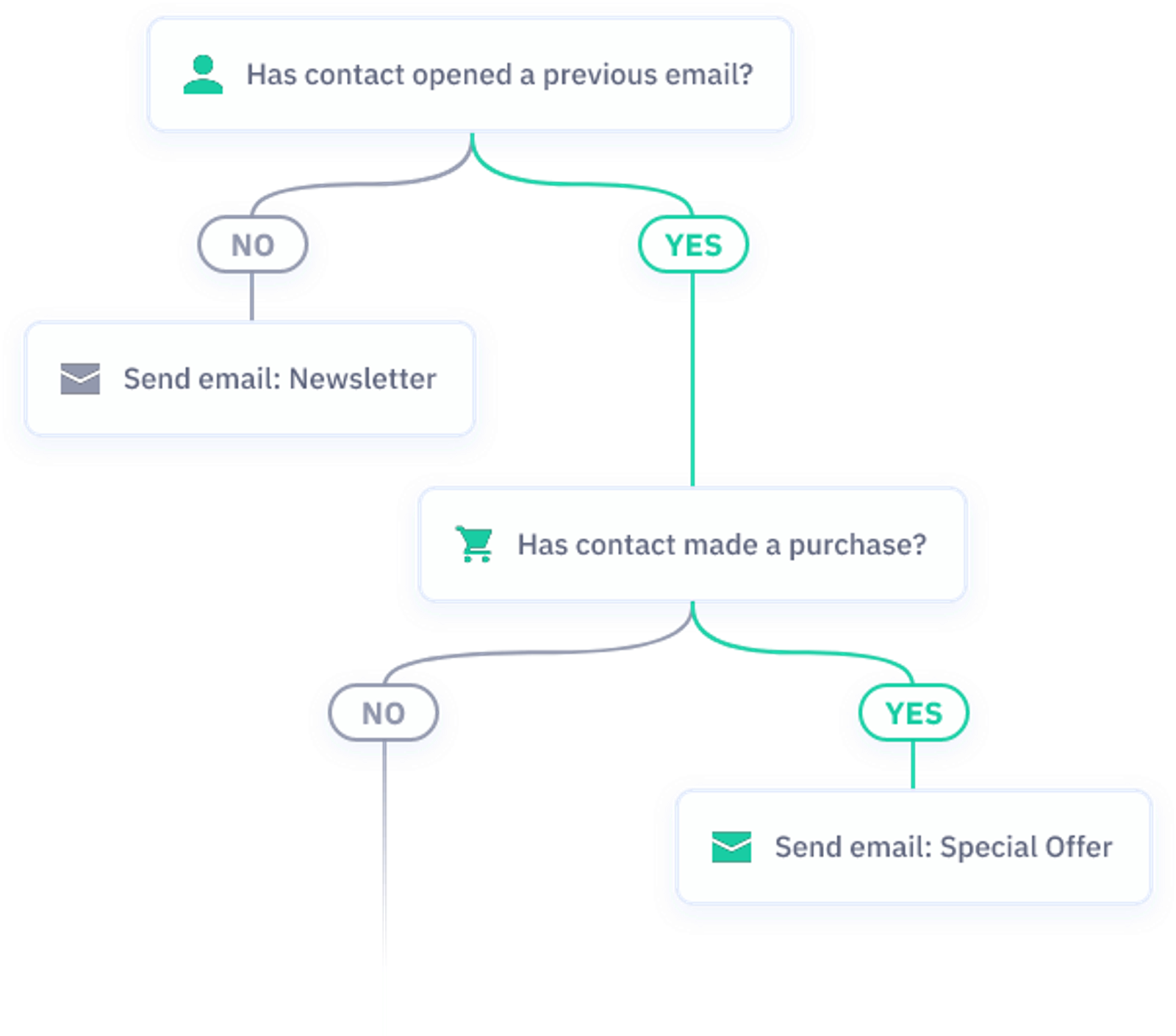This post was updated on June 14, 2022.
With over 4 billion email users worldwide, it’s no surprise that 78% of marketers say that email is essential to overall company success.
Email is effective for a lot of reasons. It’s easy to test, quick to personalize, and it’s 1 of the more affordable digital marketing tools out there. But knowing how to use email to its full potential is easier said than done.
Fortunately, this is where email tracking can help.
This article will show you what email tracking is, how it works, and the benefits of using it.
We’ll also look at what you should be tracking in your emails and how to use tracking information to grow your business.
What is email tracking?
Email tracking is the process of tracking, monitoring, and reviewing sent email data. Using an invisible tracking pixel in the images of the email, you can identify when your emails are opened, as well as other trackable actions such as:
- Open rates: How many recipients opened the email.
- Click-through rates: What percentage of email recipients clicked a link in your email message (sometimes called click tracking or link tracking).
- Bounce rates: What percentage of your sent emails bounced (meaning they didn’t reach the intended subscriber).
- Unsubscribe rate: How many users unsubscribed from your email list.
- Devices used: The devices your subscribers used to open your emails.
- Email replies: How many subscribers replied to your email.
- Email forwards: How many recipients forwarded your email to another email address.
Why is email tracking important?
Email is 1 of the most important (if not the most important) communication and marketing tools you have. You need your emails to be effective. Email tracking tells you what’s working and what isn’t. If you don’t know which messages work and which don’t, you are missing out on opportunities.
That which is not tracked cannot be improved. For example, if you’re not tracking your bounce rate, you may not know that you have an email deliverability problem. Your emails will continue to bounce, and you will miss out.
The scale of large email marketing campaigns also means that tracking and making small changes can significantly affect your business outcomes. Increasing your click-through rate by just 1% can dramatically affect sales.
Email tracking is also important for potential partnerships and collaborations. To do joint marketing, partners will often ask for your baseline metrics. Not knowing this will make you look like an amateur.
What are the benefits of email tracking?
Email tracking also helps marketers do a better job. The insights it offers can lead you to make the right changes, do more of what’s working, and do it faster and easier. Here are a few of the biggest benefits of accurate and effective email tracking.
Understand your customers
Using an email tracking tool helps you understand your customers a little better. You can find out what your consumers respond to, how they behave, and which consumers don’t respond at all.
Let’s say you run a split test on an email campaign. With unlimited email tracking, you can monitor how each email performs with email tracking and better understand what your customers respond to.

Using this information, you can improve your marketing emails and provide subscribers with a better experience.
The results of your email tracking can also help you understand your customers better in general. For example, what links they click tells you what really matters to them. You can use email tracking to segment customers to provide a more tailored experience and even offer a personalized journey.
Note: Don't forget to do initial prospect segmentation once you find emails or have an email list after leads subscribe to your newsletters. This is to ensure that your campaigns are initially as personalized as possible to each segment so that you start building a positive reputation and can encourage leads to take targeted actions.
Access to real-time insights
With email tracking, everything is in real-time, giving you instant access to vital information. This is especially important when it comes to lead nurturing and follow-up emails.
Imagine that you notice high-quality leads viewing your email multiple times (depending on the software you use, you could create a notification for when this happens). Having access to real-time reports means that you can act fast and follow up while still fresh in their minds.

Or, if you notice a particularly high bounce rate, this might indicate that something is wrong with the email or the subscriber list. As a result, you can quickly make necessary changes.
Time-based insights can also help you improve your marketing campaigns and email performance overall. Many email trackers can tell you what exact times result in the most opens and clicks for you.
For instance, if 1 of your segments is retired people, you may find that they check their emails at different times of the day than others. You can then time your email sends to be at the top of their inbox. They may also prefer to use desktop email clients to read their mail, in which case you can use a different layout to appeal to them.
Automate your marketing
Tracked emails help you automate parts of your marketing process. This saves you time following up with potential leads and provides leads with a better end-to-end experience.
Marketing automation relies on triggers (usually user actions) to tell your system to take the next step. You can create more detailed automation workflows when you monitor opens, clicks, forwards, etc. This allows you to deliver more personalized customer experiences automatically.
Tracking emails is one of the things that makes your email and automation tools work for you.

For example, a subscriber clicks a link in an email you sent. This triggers an automation for a series of follow-up emails. The emails are personalized and tailored to the specific subscriber, providing them with a better customer experience while giving you a higher chance of getting a conversion.
This is just 1 example of how email tracking helps you automate the marketing process, and there can be a variety of triggers that automate different actions. Take a look at ActiveCampaign’s trigger automations to see what else can be done.
Powerful Email Tracking
What should you be tracking?
The exact details of your email tracking strategy will depend on your needs, but almost all businesses need to keep an eye on some key metrics. Here are 4 of the most-tracked email elements which can inform various marketing decisions.
Open rates
An open rate is calculated by dividing the number of people who opened the email by the number of people who received it. The average email open rate for 2020 was 18%, though open rates differ across industries.
Open tracking indicates your subscribers’ engagement level with your brand, but it isn’t always a marker of success. This is mainly because it doesn’t actually tell you how successful your email is.
It tells you how successful your subject line and email preheader are.

If you have multiple recipients opening your email but an incredibly low click-through rate, would you consider this successful?
However, users cannot click through your email if they don’t open it. Understanding and improving your open rate vastly increases your opportunities for revenue-generating engagement.
So if you’re looking to increase email engagement and track how successful your subject lines are, open rates could be a good measurement. To track the success of your actual email, you might want to think about monitoring click-through rates.
Click-through rates (CTRs)
There are 2 types of CTRs you can measure:
- Click-through rate: This is the percentage of people that click a link or image in your email. The average click-through rate for 2020 was 2.6%.
- Click-to-open rate: This is the percentage of email viewers who click on a link within an email. The average click-to-open rate in 2020 was 14.1%.

In contrast to open rates, both of these measurements calculate the effectiveness of your email, making it a vital tracking metric.
For instance, a low CTR indicates that you need to change how you write, structure, and design your emails. It could also mean that you’re targeting the wrong audience altogether.
Unsubscribe rate
No matter what industry you’re in, the goal of email is to build relationships with potential customers.
Your unsubscriptions rate is a clear signal that something is going wrong. While it’s completely normal to have some people unsubscribe, consistently tracking your unsubscribe rate will allow you to see if there’s an uptick. It will be small and consistent most of the time, but when it increases, it’s time for a checkup.
You may learn that a new message completely missed the mark. On the other hand, you may also see your unsubscribe rate increase if you drastically increase the frequency of your emails.
Devices used
Are your subscribers using a mobile phone? A desktop? A tablet? You need to know this information to ensure your emails are optimized for such platforms.
Let’s say your email tracking shows that most subscribers open your emails on their mobile phones. Almost half of online consumers open emails on their phones, so this wouldn’t be surprising. This tells you that you need a mobile-friendly version of your email.
You might never have known how many subscribers used mobile to open your emails without email tracking, so it’s a pretty good tracking metric.
A real-business example of email tracking: Koia
Koia provides easy access to healthy, delicious, and convenient plant-based nutrition.
Using ActiveCampaign, the company used email tracking to get valuable insights about its subscribers to achieve its goals.
Here’s what happened:
- Koia segmented its subscribers and sent personalized emails based on hobbies, locations, and store preferences.
- The company created a series of automated welcome emails when a new subscriber signs up for its newsletter. The emails nurture them through the customer journey, sharing promotions and coupons and educating them about all things Koia.
- Whenever a new subscriber shows interest in Koia’s emails (either by clicking on links or opening emails), they’re also added to the Facebook Custom Audience. This allows Koia to target its leads across multiple channels and find similar audiences on Facebook.
How Koia Used Customer Experience Automation to Grow Online Sales by 92%
Since using email tracking as part of its marketing efforts, Koia has seen the following results:

Koia is a good example of how email tracking can help your business succeed. With the right platform, you can nurture your leads through the customer journey, provide customers with a better online experience, and even use this information to target consumers across multiple channels.
How to track your emails
Below, we’ve outlined some simple steps you can follow to use email tracking effectively, starting with how to choose the right email tracking software.
Choose the right email tracking software
Using the right email tracking software can streamline your entire email marketing process. Choosing the wrong one could have the opposite effect.
To find the right email software, you must understand what features you need before you start looking. This will help you find a platform to suit your needs.
Here are some of the features we offer at ActiveCampaign to give you some inspiration:
- Personalization: This is a feature you’re going to want. Why? Because consumers value personalization. With ActiveCampaign, you can customize fields in your emails based on any contact information you’ve collected.

- Drag-and-drop email designer: You don’t need to be a tech expert to design sleek and stylish emails. Using ActiveCampaign’s drag-and-drop email designer, you can create a beautiful email campaign in minutes. And, if you don’t want to bother designing an email, you can use a ready-made email template instead.

- Send a variety of email types: Use a platform that offers a variety of email types. If you don’t, you’re restricted in what you can send. At ActiveCampaign, we have broadcast emails, triggered emails, targeted emails, and more. Check out the complete list here.
Refine your subscriber list
Keeping your subscriber list up to date is helpful for a few reasons:
- It’ll give you the most accurate email tracking data.
- It’ll help you focus your efforts on leads who actively engage with your emails.
- It can reduce your marketing costs and increase your ROI.
- It can increase your open rates and click-through rates.
So spend some time making sure that your mailing list is as clean as possible. Remove duplicates, spam email addresses, and anyone who’s unsubscribed from your emails.
To make this process easier, take a look at ActiveCampaign’s List Cleanup Tool.
Set your goals and measurements
Before you send any emails, you need to decide what information you’re tracking and how to measure its success.
Are you looking for a certain amount of clicks? An increase in open rates? A reduction in bounce rates?
Whatever you choose, make sure you know why you’re tracking it. It’s no use tracking open rates if your goal is to increase your click-through rate.
Review the results
Once your emails are sent, it’s time to review the results.
Compare your results with the goals and metrics you set before sending the emails. That’ll tell you what worked, what didn’t, and how you can improve your email marketing going forward.

Consider using an email tracking system that offers reporting and analytics if you want some additional analysis.
Three best email tracking platforms
Take a look at these email tracking platforms as a starting point to finding the right platform for your business.
1. ActiveCampaign
More than just email tracking software, ActiveCampaign is a customer experience automation platform. If you’re looking for an all-inclusive email marketing solution, ActiveCampaign is exactly what you need.
Here’s a little taste of what we offer:
- Email marketing: In addition to email tracking, you can manage your entire email marketing system with ActiveCampaign. We help teams build email newsletters, create email campaigns, and send the right emails at the right time. You can even integrate external email platforms into our software to help you streamline the entire email marketing process. Take a look at our Gmail extension or our Microsoft integration for more information.
- Marketing automation: With ActiveCampaign, you don’t need to be a tech wizard to automate your marketing activity. Our drag-and-drop automation builder lets you set up automated workflows in minutes. From email automation to lead nurturing, we’ve got you covered.

- CRM and sales automation: With our CRM and sales automations, every sales rep and marketer can keep on top of the entire customer journey. This includes contact management, lead scoring, sales tasks, and even monitoring ongoing sales in the pipeline. Simply put, our platform keeps your entire sales process moving smoothly.
2. Helpwise
Helpwise is solely an email tracking platform. It shows users when recipients open their emails. The platform also allows teams to work from a shared inbox and integrate with external CRMs. ActiveCampaign offers integration with Helpwise so that you can tap into the benefits of both.
You can sign up for a 7-day free trial, and the paid plan starts at $12 per user per month (when billed annually).
3. Leadboxer
Leadboxer helps users identify qualified leads based on their behavior and profile data. The platform provides Outlook email tracking as part of its service.
Users can segment their audience with filters based on the data collected, including geographic data, online behavior, and other marketing data.
Leadboxer offers a free trial and basic or premium paid plans.
Track your emails with ActiveCampaign
By now, you have a solid understanding of what email tracking is, how it works, and how to use it to improve your business. With so many variables and ways to monitor emails, getting started might even feel a little daunting. But you don’t have to do everything all at once.
Tracking and understanding your baseline metrics is a great place to start. From there, you can make changes, experiment, and refine your marketing strategies to increase engagement and sales.To start tracking emails (and so much more), sign up for a free 14-day free trial of ActiveCampaign today.







